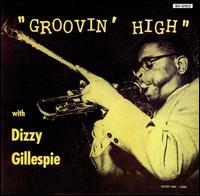
Daily Dose Of Jazz…
Alton “Slim” Moore was born October 7, 1908 in Selma, Alabama and began on baritone horn before settling on trombone by age 17. He played with local bandleaders and territory bands in his youth, such as Georgia Barlowe, Eddie Lemon, Gonzelle White, and Gene Coy.
Moving to New York City early in the Thirties he played with Jack Butler, Charlie Skeete, and Bobby Neal. Frequently switching ensembles in New York, in 1938 he did a short tour of Cuba with the Leon Gross Orchestra. Toward the end of the decade Moore moved up to play in more high-profile bands such as those of Fats Waller, Coleman Hawkins, Hot Lips Page, and Charlie Johnson. In the 1940s he played with Ella Fitzgerald, Benny Carter, Dizzy Gillespie and Louis Armstrong.
By the 1950s Slim had reduced his outings to part-time playing, after an extended stay in the band of Stafford “Pazuza” Simon. He would go on to play with Fletcher Henderson in 1957, and in the 1960s played in the Prince Hall Symphonic Band in New York as well as other big band revival outfits.
Trombonist Slim Moore, who also played and recorded on euphonium and did some scat singing, transitioned in 1978 in New York City.
More Posts: euphonium,history,instrumental,jazz,music,trombone
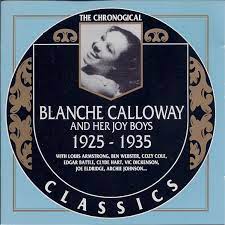
Daily Dose Of Jazz…
Edgar “Puddinghead” Battle was born on October 3, 1907 into a musical family in Atlanta, Georgia. In 1921 while a student at Morris Brown University he started playing trumpet and formed his own band, the Dixie Serenaders. A few years later the group changed their name to Dixie Ramblers.
Battle played with Eddie Heywood Sr., and toured with the 101 Ranch Boys traveling show. During the 1920s he worked with Gene Coy, Andy Kirk, Blanche Calloway, Ira Coffey, and Willie Bryant. A move to New York City in the early Thirties saw him doing short stints with Benny Carter and Sam Wooding before joining George White’s ensemble on Broadway.
Over time, he began doing more work as a studio musician and arranger, writing charts for Cab Calloway, Paul Whiteman, Fats Waller, Earl Hines, Rudy Vallee, and Count Basie. During World War II, Edgar held a position as an electrician in a shipyard, while simultaneously running a big band with Shirley Clay.
In the 1950s, he founded Cosmopolitan Records and continued to play in big bands part-time through the 1960s. Among his numerous jazz compositions are the pieces Topsy, co-composed with Eddie Durham and Doggin’ Around with Herschel Evans.
Trumpeter, trombonist, saxophonist and pianist Edgar “Puddinghead” Battle, who was also a composer and arranger, transitioned in New York City on February 6, 1977, at the age of 69.
More Posts: bandleader,history,instrumental,jazz,music,piano,saxophone,trombone,trumpet
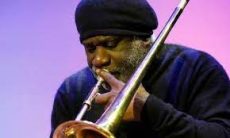
FRANK LACY QUARTET
Trombonist Frank Lacy, born August 9, 1958 in Houston, Texas has spent many years as a member of the Mingus Big Band, and returns once more to Smalls
Sets:
Walk-in music charge is $25 | Reserve tickets are $35 Sunday through Thursdays and $40 on Friday and Saturday.
More Posts: adventure,album,club,festival,genius,jazz,museum,music,preserving,restaurant,travel,trombone
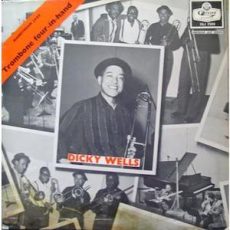
Daily Dose Of Jazz…
George Matthews was born on September 23, 1912 in Dominica, British West Indies and received classical training in New York City and played with local dance and jazz bands. In the early 1930s he joined Tiny Bradshaw’s group, being adept on tuba, trumpet, and trombone.
Later in the decade he worked with Willie Bryant, Louis Armstrong, Chick Webb, and in the Forties he recorded with Ella Fitzgerald, Lucky Millinder, and Sister Rosetta Tharpe. After World War II, Matthews worked extensively with Count Basie, then joined Erskine Hawkins’s group in the early 1950s, while recording with Dizzy Gillespie, and Dicky Wells. In the 1960s he played with Lucille Dixon, Clark Terry, and recorded with Cannonball Adderley and Ray Charles in the Sixties.
Trombonist George Matthews, who never led a recording session, transitioned on June 28, 1982.
More Posts: bandleader,history,instrumental,jazz,music,trombone
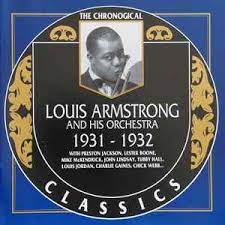
Daily Dose Of Jazz…
Johnny Lindsay was born John Lindsay on August 23, 1894 in New Orleans, Louisiana and learned both instruments while young. He played trombone in a military band and in ensembles late in the 1910s. While living in his hometown he played with John Robichaux and Armand J. Piron’s Olympia Orchestra.
Lindsay was Piron’s trombonist on recordings made in New York City in 1923 and 1924 and was a member of Dewey Jackson’s riverboat band. Relocating to Chicago, Illinois he played with Willie Hightower, Carroll Dickerson, Lil Hardin, and Jelly Roll Morton’s Red Hot Peppers. Most of his Chicago playing in Chicago was subsequently on bass rather than trombone.
Later in his career Johnny toured nationally with Louis Armstrong in the early 1930s, and then with Richard M. Jones, Jimmie Noone, Punch Miller, Johnny Dodds, Chippie Hill, Georgia White, Harlem Hamfats, and Baby Dodds.
Double-bassist and trombonist Johnny Lindsey, who was active on the New Orleans and Chicago jazz scenes and was sometimes listed as John Lindsey, transitioned on July 3, 1950.




